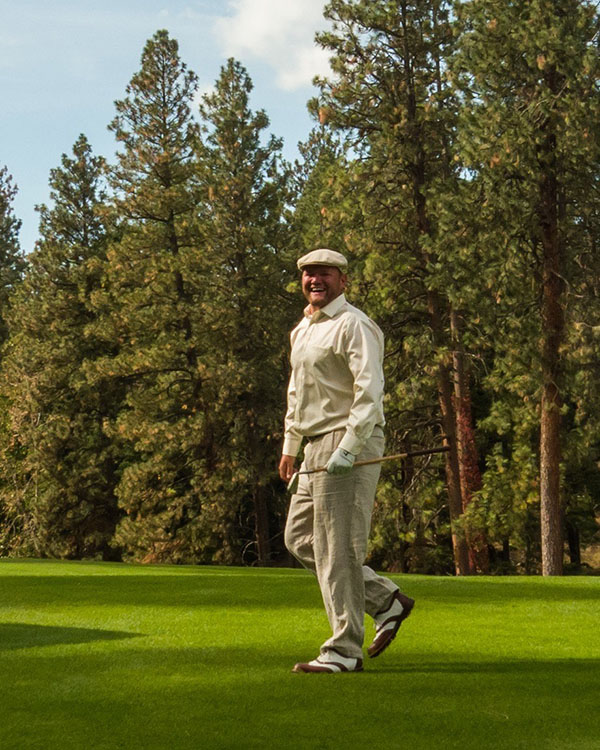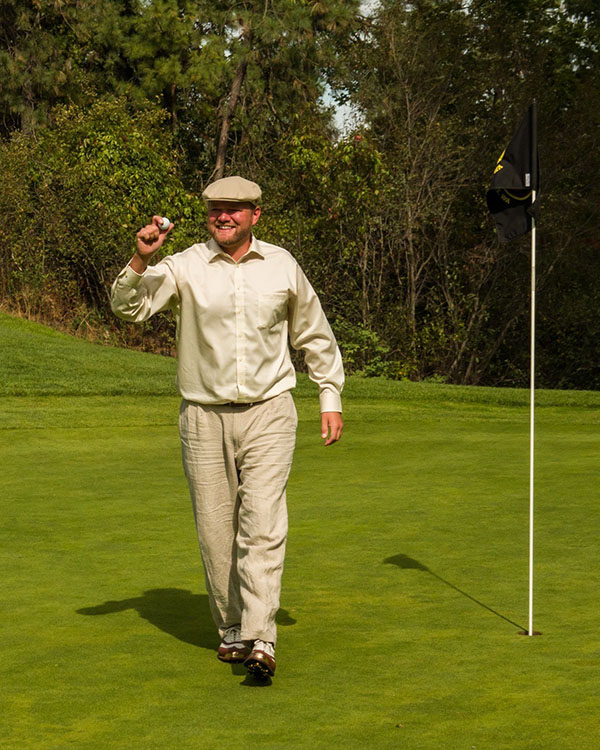Sept. 30, 2019
By Jim Davis
The albatross.
A rare bird, on sea or on the golf links. In golf an albatross is the title used to describe a score of three under on a given hole. That can only happen on a par 5 (or more) because if you hole out your tee shot on a par four, you must settle for a hole-in-one. Of course, that’s pretty good, too!
PGA Tour legend Gene Sarazen’s “shot heard round the world” at the 1935 Masters is the most famous of these birds and to have happened at a Major is by far the most rare. It happened on the par-5 15th hole and forced a tie for the lead. Gene won the playoff, as you no doubt know.
Many modern pros have notched an albatross in their careers, including Jack Nicklaus, Shaun Micheel, and Joey Sindelar. Nicholas Thompson scored one at the 2009 Fry.com Open. What’s interesting about Thompson’s feat, on the 11th hole, is that he followed it up with a hole-in-one on the par-3 13th. It was just his day… a very good day.
In case you are wondering, there is a group that tracks such occurrences, the National Hole in One Association, which provides insurance to golf events against this budget buster. After all, you might have to fork over a new car, or whatever else you’ve plunked down as an award for the ace. Still, the odds are in the event host’s favor. The NHOA estimates the odds for a hole-in-one at 12,700 to 1 for the average public player; while the pros, who play golf near constantly, have odds of 3,700 to 1. An albatross? Try to beat 6 million to 1. And a hickory albatross? Don’t even try.
Which makes Andrew Von Lossow’s feat at the 2019 Spokane Hickory Open an eye-opening bit of hickory golf news.

Photos by Jeff Lefferts.
The Northwest Hickory Players were visiting Indian Canyon GC for the 2019 Spokane outing. Some 35 players were in the field from California to Canada, Idaho and Arizona…Oregon, too. It was beautiful early fall weather and Von Lossow, the son of Northwest golf pro and teacher, Jim Von Lossow, was one of the earliest ones on the course for the opening round. He had already parred the first hole. The second is a 447-yard par five with a left-bending dogleg.
“I hit a nice solid tee shot to the middle of the fairway and had a straight shot at the green from around 195 yards,” Von Lossow says. “My lie dictated a little bit of a cut shot but I knew with a good swing I could hit it fairly straight and get my ball to the middle of the green.”
About 195 yards out, Von Lossow aimed for a bank to the left of the green, thinking a miss here would release back toward the hole. He took a Tad Moore OA Jigger for this shot.
“I felt good, and let it rip with a nice, balanced swing,” he says. “It was a pure strike and I remember being simply pleased to have hit it solid.”
Von Lossow and the rest of his foursome watched the ball begin to cut, almost with a purpose, toward the flag. The ball landed on the green about 10 feet from the stick, took one hop and disappeared.
“We barely heard any noise and the flagstick never moved,” he says. “I thought it might have gone over the green, but surely it finished middle of the green at worst.”
His playing partners were not 100 percent sure, but thought they heard something. Von Lossow said that is when it hit him. “That ball truly went in! It was too perfect not to go in. A nice celebratory yell and high fives to go around. An albatross!”
Smiling all the way to the green, Von Lossow says the ball in the cup was spectacular confirmation of one of golf’s rarest shots… and with a hickory jigger at that!
The Northwest Hickory Players tracks holes-in-one from its members and has inaugurated what the group calls its “Dodo Club.” The dodo, reports NWHP’s Martin Pool, was a commonly-used term in the 1920s and 1930s to describe a hole-in-one. “It was thought that making a hole-in-one was as rare as sighting a dodo,” he says. “The term gradually faded from common usage and became extinct much like its namesake.”
From official sources, then –The dodo was an extinct heavy flightless bird (Raphus cucullatus syn. Didus ineptus of the family Raphidae) of the island of Mauritius. It was larger than a turkey and was related to the pigeon.
The following are members of the exclusive NWHP Hickory Dodo Club:
Larry Buckingham – 2016
Galen Peterson – 2015
Martin Pool – 2014
Rob Ahlschwede – 2004
And now, Mr. Andrew Von Lossow – 2019
“The Seattle Times uses the term ‘dodo’ for a hole-in-one on many occasions, and perhaps it was more common usage in the Northwest than in other parts of the country,” Pool said. “The term was used well into the 1960s. Burke Manufacturing Company had something called a Dodo Club wherein they mailed out a dozen golf balls to players who reported a hole-in-one.
“Andrew’s double eagle may not technically be termed a dodo, but as it is even rarer than an ace, I thought he should be included in our Hickory Dodo Club. I’ve attached a couple of articles from 1926 and 1929, the latter referring to a double eagle as a dodo.”
Seattle Daily Times, April 4, 1926, page 30

